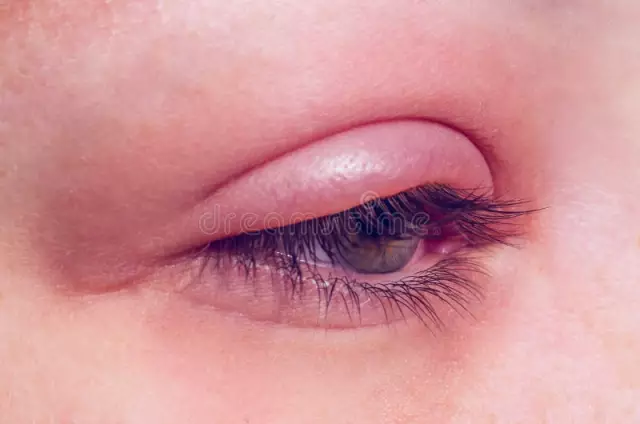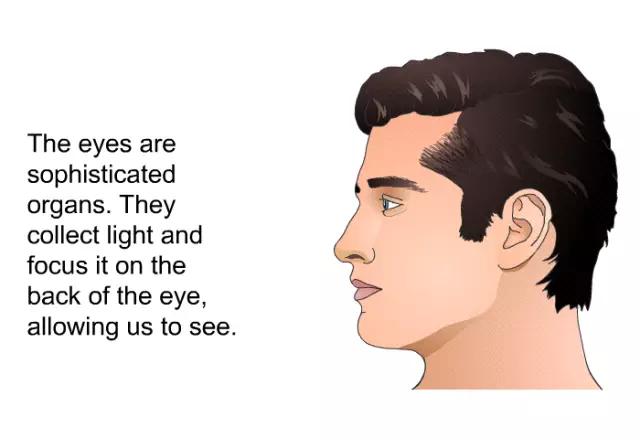- Author Rachel Wainwright [email protected].
- Public 2023-12-15 07:39.
- Last modified 2025-11-02 20:14.
Proxodolol
Proxodolol: instructions for use and reviews
- 1. Release form and composition
- 2. Pharmacological properties
- 3. Indications for use
- 4. Contraindications
- 5. Method of application and dosage
- 6. Side effects
- 7. Overdose
- 8. Special instructions
- 9. Application during pregnancy and lactation
- 10. Use in childhood
- 11. Drug interactions
- 12. Analogs
- 13. Terms and conditions of storage
- 14. Terms of dispensing from pharmacies
- 15. Reviews
- 16. Price in pharmacies
Latin name: Proxodolol
ATX code: S01EX
Active ingredient: proxodolol (Proxodolol)
Producer: Moscow Endocrine Plant, Federal State Unitary Enterprise (Russia), Sintez, JSC (Russia)
Description and photo updated: 30.11.2018

Proxodolol is an alpha- and beta-blocker, antiglaucoma agent.
Release form and composition
Dosage form - eye drops 1% and 2%: transparent colorless or light yellow liquid (1.3; 1.5; 2 or 5 ml each in polymer tube-droppers, in a cardboard box 1, 2, 4, 5 or 10 tube-droppers; 5 or 10 ml in polymer dropper bottles, in a cardboard box 1-2 dropper bottles; 5 ml in glass bottles, in a cardboard box 1 bottle complete with a dropper cap or 1 cell contour packaging containing 5 bottles, complete with 5 dropper caps; each pack also contains instructions for the use of Proxodolol).
Composition of 1 ml drops:
- active substance: butylaminohydroxypropoxyphenoxymethyl methyloxadiazole hydrochloride (proxodolol) - 10 or 20 mg;
- auxiliary components: sodium citrate pentasesquihydrate, sodium chloride, benzethonium chloride, citric acid monohydrate (or citric acid in terms of citric acid monohydrate), water for injection.
Pharmacological properties
Pharmacodynamics
Proxodolol is a non-selective alpha and beta blocker. Affects β 1 -, β 2 - and α-adrenergic receptors. Reduces the production of aqueous humor and facilitates its outflow, resulting in a decrease in intraocular pressure.
A decrease in intraocular pressure is noted 15-30 minutes after instillation of the drug, reaching a maximum after 4-6 hours. The duration of action lasts for 24 hours.
Does not have a local irritating effect. Does not affect pupil size, accommodation and refraction.
Pharmacokinetics
Data on the pharmacokinetic parameters of Proxodolol are not provided by the manufacturer.
Indications for use
- increased intraocular pressure;
- secondary glaucoma, including aphakic glaucoma;
- angle-closure glaucoma - to reduce intraocular pressure (in combination with miotics);
- congenital glaucoma (if other therapeutic measures are insufficient).
Contraindications
Proxodolol is contraindicated in case of hypersensitivity to any component of the drug.
Eye drops should be used with caution in the following cases:
- peptic ulcer of the stomach and duodenum;
- type I diabetes mellitus;
- atrioventricular block II - III degree;
- sinus bradycardia;
- chronic heart failure;
- cardiogenic shock;
- chronic obstructive pulmonary disease;
- bronchial asthma;
- childhood;
- pregnancy and lactation.
Proxodolol, instructions for use: method and dosage
Proxodolol should be instilled into the conjunctival sac.
At the beginning of the treatment, 1-2 drops of 1% solution are prescribed 2 or 3 times a day. In case of insufficient effect, a 2% solution is used.
Side effects
- on the part of the organ of vision: blurred vision, short-term burning sensation in the eyes;
- from the digestive system: dry mouth, gastralgia, nausea;
- from the central nervous system: weakness, headache, dizziness;
- on the part of the cardiovascular system: lowering blood pressure, AV blockade, bradycardia;
- allergic reactions: urticaria, local or generalized exanthema;
- others: increased contractility of the myometrium, development of bronchospasm.
Overdose
Overdose cases with topical application of Proxodolol eye drops have not been recorded.
special instructions
It is not recommended to wear soft contact lenses during drug treatment.
Patients using rigid lenses should remove them before instillation and put them on no earlier than 15-20 minutes after instillation of drops.
Influence on the ability to drive vehicles and complex mechanisms
In some cases, Proxodolol eye drops cause temporary impairment of visual perception, therefore, immediately after instilling the drug, one should refrain from engaging in potentially hazardous activities for some time that require clear vision and increased reaction speed.
Application during pregnancy and lactation
The experience of using Proxodolol during pregnancy and lactation is very limited. The drug is prescribed only in cases where the expected benefit is higher than the potential risks.
Pediatric use
There is not enough experience in the treatment of children with the drug. In pediatrics, Proxodolol is used after careful assessment of the benefits and risks.
Drug interactions
Proxodolol enhances the effect of clonidine and pilocarpine on intraocular pressure.
Systemic alpha- and beta-blockers can enhance the hypotensive effect.
Analogs
Analogs of Proxodolol are: Alfabrim, Alfagan R, Luxfen, Proxodolol-AKOS.
Terms and conditions of storage
Store out of the reach of children, protected from light, at temperatures up to 25 ° С - solution in vials, at temperatures up to 15 ° С - the drug in tube-droppers and bottle-droppers.
Shelf life - 2 years, after opening the bottle - 1 month.
Terms of dispensing from pharmacies
Dispensed by prescription.
Reviews about Proxodolol
Reviews of Proxodolol are positive. Patients point to the high antiglaucoma efficacy of the drug, its good tolerance and low cost.
Price for Proxodolol in pharmacies
The approximate price for Proxodolol is 34 rubles. per package containing 5 dropper tubes of 1.5 ml of 1% solution.

Maria Kulkes Medical journalist About the author
Education: First Moscow State Medical University named after I. M. Sechenov, specialty "General Medicine".
Information about the drug is generalized, provided for informational purposes only and does not replace the official instructions. Self-medication is hazardous to health!






